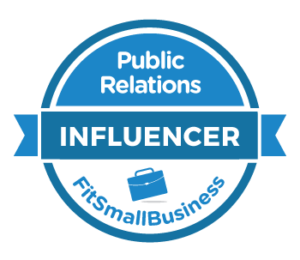Much has been written about the sorry state of the press release, especially when it comes to techPR. Just earlier this week CIO Magazine blogger Thomas Wailgum cited high tech vendor press release as number 6 on his list of Ten Things he Hates about Tech. (I am thinking of doing a post “the Top Ten things I hate about Top Lists”… then again, he wrote it, I read it, linked to it and you may well be reading it now so I suppose they work).
Whether the number is ten or a trillion, or the units are petaflops or a terabytes, one of the challenges we face in tech PR is the ability to tell a good story. This is at least in part due to the fact that the stories are often built on performance numbers or “specs”. And all too often we throw numbers around without having any idea of what they really mean.
In this era of seemingly weekly trillion dollar bailouts, the public is being forced to digest large numbers and it is sometimes hard to have any real connection with them: to know what they mean and how to compare them. This is especially true in tech, where it is not only numbers but the units of measurement that need to be understood; often in obscure areas that are far outside the experiences of any PR person who does not use the end product or has not labored on the front lines of tech engineering.
The best advice I can give (and what I tell my teams) is that you cannot run from the numbers but need to take the time to get your arms around them. This means not just aping lines and taking what the client hands you in terms of specs, but understanding what the common benchmarks, standards and units of measurement are.
Try to get a sense of how people – reporters, analysts and other industry folks – measure and compare specs and performance in your specific area of tech. What is really considered to be breakthrough and what is par for the course?
Then, take a step back, compare this information with what your client claims, and do your best to keep the client honest. Be cognizant of the numbers you are using and wrap them into your client’s story with an appreciation for what they really mean.
I saw a couple of articles on related areas that are worth mentioning.
In The Biggest of Puzzles Bought Down to Size, which ran in the NY Times Science section yesterday, Natalie Angier reports how to use the back of the proverbial envelope to comprehend large numbers and quickly calculate imponderables like how many miles Americans travel on the road each year or the total volume of human blood in the global population As the article states:
It’s really just critical thinking, breaking down seemingly
complicated problems into simpler problems,” said John A. Adam, a
professor of mathematics at Old Dominion University
in Norfolk, Va… To further enhance one’s quantitative prowess, Dr. Adam suggests
translating amorphous figures into familiar terms. A million seconds,
for example, is about 10 days, while a billion seconds amounts to some
32 years.
A few weeks ago WSJ writer Carl Bialik (The Numbers Guys, according to his column heading) wrote a story about deceptive numbers in advertiser claims in his article In Ads, 1 out of 5 claims Is Bogus


